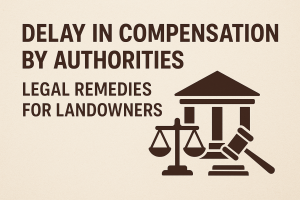Introduction
The Consumer Protection Act, 1986, was a watershed moment in Indian legal history. Enacted to protect consumer rights and ensure fair practices, the Act provided for an accessible and quick redressal mechanism for grievances. At a time when consumer interests were often neglected, this law recognised that consumers too have rights, and these must be legally enforceable.
Even though the Act has now been replaced by the Consumer Protection Act, 2019, understanding the 1986 version is crucial for legal students, professionals, and researchers as it laid the foundation of consumer jurisprudence in India.
📚 Objective of the Consumer Protection Act, 1986
The Act was enacted to:
- Protect consumer rights.
- Promote and protect the interests of consumers.
- Establish authorities for the timely and effective settlement of consumer disputes.
It intended to prevent exploitation of consumers and ensure justice through a dedicated redressal mechanism.
Structure of the Consumer Protection Act, 1986
The Act is divided into three parts and contains a total of 31 sections. The major focus is on consumer rights and the establishment of redressal forums.
PART I – Preliminary
- Section 1: Short title, extent, and commencement.
- Section 2: Definitions – the most crucial section of the Act.
Key Definitions under Section 2:
- Consumer [Section 2(1)(d)]: A person who buys goods or avails services for consideration.
- Deficiency [Section 2(1)(g)]: Any fault, imperfection, or inadequacy in the quality of service.
- Defect [Section 2(1)(f)]: Any fault or shortcoming in the quality, quantity, or standard of goods.
- Unfair Trade Practice [Section 2(1)(r)]: Misleading advertisements, false claims, etc.
- Complaint [Section 2(1)(c)]: Allegation made by a consumer.
Consumer Rights under the Act
The Act recognizes six basic consumer rights, which include:
- Right to Safety – Protection from hazardous goods and services.
- Right to be Informed – Complete information about the product or service.
- Right to Choose – Access to a variety of goods/services at competitive prices.
- Right to be Heard – Consumer interests receive due consideration.
- Right to Redressal – Fair compensation for unfair trade practices.
- Right to Consumer Education – Awareness about consumer rights.
These rights align with the global framework for consumer protection, as recommended by the United Nations.
Redressal Mechanism Under the Act
The 1986 Act provided for a three-tier redressal mechanism:
1. District Forum – For claims up to ₹20 lakhs.
- Headed by a District Judge.
- Empowered to order replacement, refund, compensation.
2. State Commission – For claims above ₹20 lakhs and up to ₹1 crore.
- Headed by a High Court judge.
- Hears appeals from District Forum.
3. National Commission – For claims exceeding ₹1 crore.
- Headed by a Supreme Court judge.
- Hears appeals from State Commissions.
Each forum had powers akin to a civil court and could enforce attendance, examine witnesses, and demand records.
Articles of the Indian Constitution Relevant to the Consumer Protection Act
Though the Act itself is not part of the Constitution, several constitutional provisions support the objectives of consumer protection:
Article 14 – Right to Equality
- Ensures equality before law and equal protection. Consumers have equal right to justice.
Article 21 – Right to Life and Personal Liberty
- Includes the right to a safe environment and safe goods/services.
Article 38 & 39 – Directive Principles of State Policy
- Promote welfare of the people and prevent exploitation.
Article 47 – Duty of the State to raise the level of nutrition and standard of living.
These constitutional principles align with the intent of the Consumer Protection Act to ensure fairness, safety, and access to justice.
Key Provisions of the Consumer Protection Act, 1986
The Act consisted of 31 sections, divided into three parts and covered important definitions, rights, and remedies. Below is a table summarising the main structure of the Act:
| Part | Sections Covered | Content |
| Part I | Sections 1 to 2 | Preliminary and Definitions |
| Part II | Sections 4 to 8 | Consumer Protection Councils |
| Part III | Sections 9 to 27 | Consumer Dispute Redressal Agencies |
Important Definitions under Section 2
The definitions under Section 2 are crucial to understand the applicability of the Act. Some important ones include:
| Term | Section | Definition |
| Consumer | 2(1)(d) | A person who buys any goods or services for consideration and not for resale or commercial use. |
| Complaint | 2(1)(c) | Any allegation made by a consumer in writing, such as unfair trade practice or defective goods. |
| Defect | 2(1)(f) | Any fault or imperfection in the quality or standard of goods. |
| Deficiency | 2(1)(g) | Any inadequacy in the nature and manner of performance of a service. |
| Unfair Trade Practice | 2(1)(r) | Deceptive, misleading, or false practices including advertising and representation. |
Consumer Rights Recognised Under the Act
The Act emphasised six key consumer rights to protect individuals from exploitation:
| Right | Meaning |
| Right to Safety | Protection against products and services hazardous to life or health. |
| Right to be Informed | Complete product and service information for making informed choices. |
| Right to Choose | Access to a variety of goods/services at competitive prices. |
| Right to be Heard | The consumer’s interests will receive due consideration. |
| Right to Redressal | Fair and timely compensation or remedy. |
| Right to Consumer Education | Knowledge about consumer rights and responsibilities. |
These rights mirrored global standards laid down by the United Nations Guidelines for Consumer Protection.
Redressal Mechanism: Three-Tier System
One of the most significant features of the Act was the quasi-judicial three-tier consumer grievance redressal system.
| Forum | Jurisdiction (Value of Claim) | Headed By | Appeals To |
| District Forum | Up to ₹20 lakhs | District Judge | State Commission |
| State Commission | ₹20 lakhs to ₹1 crore | High Court Judge | National Commission |
| National Commission | Above ₹1 crore | Supreme Court Judge | Supreme Court |
Each of these forums could:
- Summon witnesses.
- Examine documents.
- Pass orders for replacement, refund, or compensation.
Constitutional Articles Supporting Consumer Protection
Though the Consumer Protection Act, 1986 was a statutory legislation, several Articles of the Indian Constitution indirectly support consumer protection:
| Article | Provision | Relevance to Consumers |
| Article 14 | Right to Equality | Equal protection of law includes consumer justice. |
| Article 19(1)(g) | Right to Practice Any Profession | Places limits on traders from exploiting consumers. |
| Article 21 | Right to Life and Personal Liberty | Includes right to safe products and services. |
| Article 38 | State to Promote Welfare of the People | Supports the cause of consumer protection. |
| Article 47 | Duty of State to Raise Nutrition and Living Standards | Encourages regulation of food safety and consumer goods. |
Landmark Judgments Under the 1986 Act
The following landmark cases shaped the interpretation of the Consumer Protection Act, 1986:
- Indian Medical Association v. V.P. Shantha (1995)
-
- Held that medical services are included under “services” in the Act.
- Lucknow Development Authority v. M.K. Gupta (1994)
-
- Included housing and public bodies under the Act.
- Spring Meadows Hospital v. Harjot Ahluwalia (1998)
-
- Recognised claims by the guardian (payer) of the consumer (child).
These judgments expanded the scope and applicability of the Act significantly.
Repeal and Replacement: Consumer Protection Act, 2019
While the 1986 Act served the country for more than three decades, the rise of e-commerce, digital advertising, and online frauds required a modernised legal framework.
The Consumer Protection Act, 2019 replaced the old law and introduced:
- Central Consumer Protection Authority (CCPA)
- Product Liability
- Regulation of E-commerce platforms
- Stronger penalties for misleading ads
Yet, many principles, definitions, and rights from the 1986 Act were retained and expanded upon.
Conclusion
The Consumer Protection Act, 1986, played a vital role in empowering Indian consumers and shifting the balance of power from seller to buyer. It introduced a simple, inexpensive, and fast-track grievance redressal system, marking a turning point in consumer rights jurisprudence.
While the Act has now been replaced, its contribution to consumer awareness, fairness in trade, and legal empowerment remains deeply respected and remembered. Understanding its provisions and their constitutional underpinnings is essential for anyone in the field of law, commerce, or public policy.



